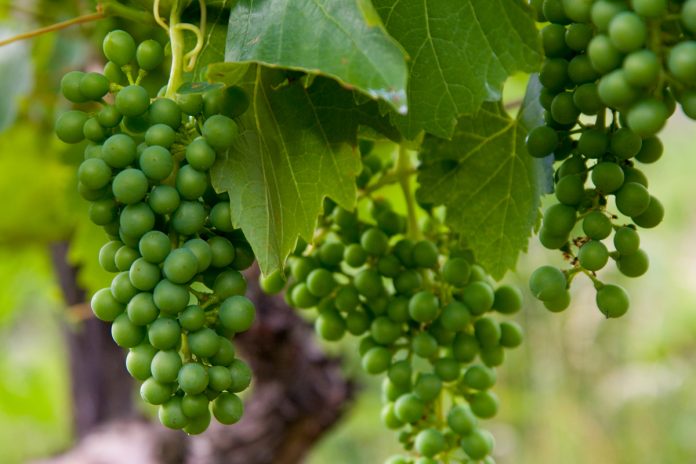Philippe Rolshausen from University of California, Riverside focuses on understanding specific biotic and abiotic factors that limit tree crop productivity, aka the microbial terroir of vineyards
My lab is currently working on invasive and endemic vascular diseases including citrus Huanglongbing, grapevine Pierce’s disease, and fungal vascular diseases of almond and grapevine.
Grapevine is one of the most cultivated fruit plants in the world with an estimated 7.5 million hectares of wine-growing surface area in 2016.1 The identity of a wine-growing region is captured in the notion of ‘terroir’ (stems from the French word ‘terre’, or land) and is defined by the collection of factors that shapes a wine sensory profile. The terroir starts in the vineyard where grapes are grown and finishes in the winery where wine is made. The character of grapevine variety (for example Cabernet Sauvignon or Chardonnay) unfolds specifically under the unique edaphic (soil physical and chemical properties) and climatic (annual rainfall, heat and cold units, and sunlight) environmental factors of a viticulture region. Moreover, the grape growing practices such as the training of the vine, or the fertilisation and irrigation regimes, affect the quality of the fruit and at last, the winemaking processes such as the maceration time, or the fermentation temperature, reveal the final characters of the wine.
Microbes
Microbes are also an important part of the terroir because they are the catalysers of the winemaking processes but also because of their constant interactions with the plant and the fruit in the vineyard. The collection of microbes is also known as the microbiome. First, the yeasts Saccharomyces cerevisiae are responsible for the primary fermentation that transforms the grape sugar into alcohol (and carbon dioxide). Second, the lactic acid bacteria (Lactobacillus, Oenococcus, and Pediococcus) perform the secondary fermentation that converts malic acid to lactic acid. Those two key biochemical processes make a wine more or less sweet and acid and generate by-products that shape the sensory aspect of the wine. Many winemakers prefer to control fermentation and inoculate must with cultured yeasts and bacteria. However, they also naturally live on the surface of grapes and are endemic to vineyards or wineries. Some traditional winemakers rely exclusively on those natural microbial strains for fermentation as a characteristic of the region’s terroir.
There are many additional microbes that interact with grapevines and either impact crop productivity, fruit quality, or both. Hence, some nitrogen-fixing bacteria and mycorrhizae fungi can promote grapevine growth by increasing nutrient acquisition and transportation (see article ‘Harnessing the Plant Microbiome for Commercial Applications’.2 Grapevine releases food in the form of photosynthetically fixed carbon from its roots in exchange for nutrients (nitrogen, phosphorus) and improved tolerance against abiotic and biotic stresses from the microbes.
In contrast, microbial pathogens negatively impact vineyard productivity and fruit quality. For instance, the bacterium Xylella fastidiosa resides in the plant xylem (trunks and stems) and impairs movement of water and nutrients causing raisining of the berries and rapid death of the vine. The pathogen is native to the Americas but has recently become a global threat to viticulture due to recent introduction events in Europe. Several fungi also blemish the fruit, which directly impacts wine quality. Botrytis cinerea is certainly the most obvious one because it causes two types of rots in wet viticulture areas. Bunch rot is the one that every grape grower fears because it induces off-flavours in wine at low incidence and when left uncontrolled, can cause major crop loss.
However, under the right environmental conditions, a noble rot develops that shrivels-up the berries making a unique dessert wine (so-called ‘botrytised’ wine) with high residual sugar and unique sensory profile.
Research has leveraged the power of novel “omics” technologies to unravel the DNA fingerprint of the microbiome associated with vineyards and wineries and found clear evidence that the terroir and the notion of unique character traits of a viticulture area, also applies to microbes. In other words, each grape growing, and winemaking region of the world has a unique set of microbes that shapes its identity. One reason is that the factors that fashion a terroir (edaphic and climatic factors, cultural practices and so on) influence the microbial composition. For example, one can easily understand how organic vs. conventional farming differently impacts the microbial communities inhabiting a vineyard, as synthetic agrochemicals select for a different set of microbes than biopesticides (see article ‘Biological Pesticides and the Future of Sustainable Agriculture’)3.
One of the research topic studied in my laboratory, is to elucidate the origin of microbes associated with grapevines and more specifically in the vascular system of the plant (see article ‘Endophytic Microbial Assemblage in Grapevine.’)4 The plant vasculature plays a key role of connecting all the plant organs and internally transporting water, nutrients and signals. Characterising microbes living inside the plant has gained traction from the standpoint of developing commercial bioproducts because they are more likely to have active functions with regards to plant health. Our data shows that the grapevine endosphere (root, sap, trunk, shoot) is not microbiologically rich and diverse when compared to the soil environment where it is grown.

We suspect that the extreme and unique environmental conditions in internal plant tissues that include low oxygen, negative pressure, and limited food availability, are not conducive to most organisms. Data showed that the rootstock (the underground root portion of a grafted plant) is predominantly colonised with microbes that originate from the soil. However, the scion (the aboveground root portion of a grafted plant) displayed a completely different microbial fingerprint with microbial origins likely from above ground introduction such as insect feeding events or following plant wounding. We also suspect that a portion of the organisms in the plant are inherited from mother vines and transferred to progenies during the plant propagation process in nurseries.
Both above- and belowground microbial communities are intermixed in limited capacity via the plant sap. A minority of microbes used the vascular system as a free way to travel throughout the plant to colonise all plant organs.
References
1 http://www.oiv.int/en/statistiques/
2 https://www.openaccessgovernment.org/plant-microbiome/63138/
3 https://www.openaccessgovernment.org/pesticides-future-sustainable-agriculture/44832/
4 https://doi.org/10.1093/femsec/fiaa053
*Please note: This is a commercial profile











